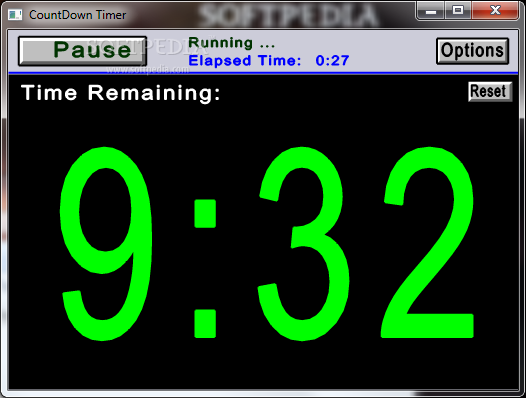

#JAVA PROGRAM ALARM CLOCK CODE#

Circuit Diagram Connect the LCD to the Arduino as follows: The time and date will also be displayed on the LCD. The beeping time in our code is 2 minutes, but you can increase it as much you want. If the current time matches with the alarm time, then the buzzer will start to beep. We will get the time and date from the RTC module using the library functions and then we will compare this time with the alarm time that we have set in the code. It has a built-in 3V battery, which keeps updating the time. The ASEME and AMOLA presentation is accompanied by two real-world systems presentations (as case studies) that were engineered using this methodology with successful evaluation results and also incorporates a meetings management system development example that demonstrates the whole development lifecycle (from requirements to computer code).How Does the Arduino Alarm Clock Work? The DS3231 real time clock module keeps track of the time even when the module is not powered. The ASEME Platform Independent Model (PIM) that is the output of the design phase is a statechart that can be instantiated in a number of platforms using existing CASE tools and to an agent platform, the Java Agent Development Framework (JADE).

#JAVA PROGRAM ALARM CLOCK SOFTWARE#
The development process is described using the Software Process Engineering Metamodel (SPEM), the language that is proposed by FIPA for such processes specification.

This is the second originality of this thesis, the fact that different models are created for each development phase and the transition of one phase to another is assisted by automatic model transformation including model to model (M2M), text to model (T2M) and model to text (M2T) transformations leading from requirements to computer programs. ASEME applies a model driven engineering approach to multi-agent systems development, thus the models of a previous development phase are transformed to models of the next phase. This is the first originality of this thesis, the fact that the inter-agent control model is defined using the same formalism with the intra-agent control model thus allowing the integration of inter-agent protocols in the agent’s model as capabilities. AMOLA deals with both the individual and societal aspect of the agents showing how protocols and capabilities can be integrated in agents design. The analysis phase builds on the concepts of capability and functionality. The first defines the agent’s behavior byĬoordinating the different modules that implement his capabilities, while the latter defines the protocols that govern the coordination of the society of the agents. It supports a modular agent design approach and introduces the concepts of intra-and inter-agent control. AMOLA provides the syntax and semantics for creating models of multi-agent systems covering theĪnalysis and design phases of a software development process. This thesis presents on one hand the Agent Modeling Language (AMOLA) for modeling multi-agent systems and on the other hand the Agent Systems Engineering Methodology (ASEME) for developing multi-agent systems.


 0 kommentar(er)
0 kommentar(er)
